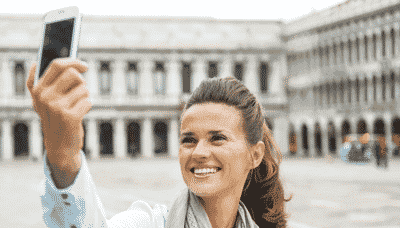In our current age, with cameras in everyone’s phones, people take selfies all the time and post them to social media. Often, when we see ourselves in a selfie, we find that our image looks strange to us. This isn’t just in our heads; there are some interesting scientific reasons for this.
First, the lens in a camera is a wide-angle lens, and when held close to our face, it causes a marked distortion and warping of our facial geometry. Our brains are hardwired to appreciate certain ratios in our faces. These ratios have a basis in the timeless beauty ratios described in the Renaissance. In fact, our subconscious brain has an innate affinity for the natural facial balance seen in people. When the camera distorts our face, it looks “off” to us because the distortion stands in stark contrast to what we are used to seeing in other people and when we look in the mirror.
Another reason for our selfies looking “off” is that the image our brain is used to seeing of ourselves is the image we see in the mirror. Throughout our lives, the image we see when we think of ourselves is this mirror image, which to our brains represents “true” us. However, the image taken by a phone camera is the real image of us and not the mirror image. This often causes us to see something in our faces that doesn’t seem real to us, and this unfamiliarity with our own faces can be distressing.
Selfies can also highlight specific facial changes that we usually overlook. We’re used to looking at a face globally, but the close-up photo in a selfie can focus our attention on one specific part of our face which may not be ideal. For instance, studies have shown that a person’s nose and its irregularities — which might be ignored when looking at the face as a whole — become magnified by the wide-angle facial distortion created in a selfie. Finally, selfies can make us aware of structural imbalances that exist in our face. These are common as we age, but seeing them for the first time in a selfie can be distressing.
Thankfully, there are many non-surgical techniques to help with things like irregular noses or the loss of facial volume that occurs with age. While selfies are often not the real image people see when looking at us, they can point out issues which we may have ignored or overlooked in the past. If selfies have caused you to see things in your face that aren’t working for you and you’d like assistance with this, please contact our office for a consultation.
